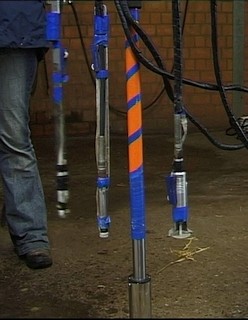
Technology
Good horse dentistry should be precise, safe, easy for the horse and require only a minimum dose of sedation. In addition to horsemanship that wins the horses’ cooperation for the treatment, adequate technology plays a key role.
With dentistry being part of the maintenance of the horse for hundreds of years, instruments for dental treatments were designed and developed a long time ago. Many of these basic instruments still fulfill their purpose. They are being replicated and sold today. Others, i.e. gag speculum, canine nippers, molar cutters, molar spreaders and chisels became obsolete and are replaced with modern tools that make procedures safer and less stressful for the horse.
In the contemporary world of equine dentistry, there are different approaches to technology with different effects. Basically a horse dentist can prefer to work with power tools or can use mainly manual instruments. Pequinox Equine Dentistry uses precise customized manual floats instead of electrical floats. All power tools are watercooled and used only to shorten the incisors and to remove some specific abnormalities.
Combining his thorough experience in horse dentistry, blacksmithing and tool development, Louis has developed manual streamline floats that exactly compliment the anatomical conditions in the horses’ mouth – instruments designed by a horse dentist for horse dentists, making the horses’ well-being the top priority. In combination with cooperative horsehandling skills, these tools make the treatment very easy for the horse so that no high dose of sedative is required. Also, the application of cooperative horsehandling skills and the detection of sensitivities would be impossible with a highly sedated horse not aware enough for constant communication and interaction with the dentist.
Louis manufactures the instruments with much the same design developed through generations. The customized tools are very small, so the horse doesn’t have to open its mouth wide. The manual tools also have less chance of creating heat which causes damage to the tooth as well as to its attached structures, and less danger of overfloating the molars. Since the horses’ teeth all have their own angles and specifics, safe and easy high precision work cannot be done with the same float for all teeth. A set of tools therefore, consists of at least 12 different floats for the different kinds of teeth.
Contact us for more information about our customized manual instruments.





